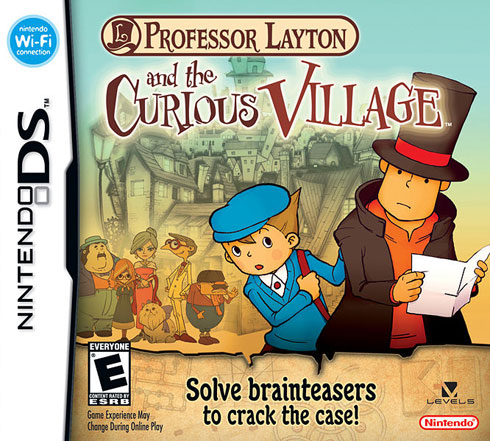You might not have heard of Professor Tago Akira, but you most probably will have heard of “PROFESSOR LAYTON” — Nintendo’s bestselling video game! And Professor Tago was the inspiration and one of the developers of that market-busting Nintendo game.

Tago Akira (born in 1926) is considered one of the most influential or popular educators of our times. He is still an active advocate in early childhood education, particularly where “right brain training” theories are concerned (perhaps more so than the other braintrain luminary Dr Shichida). A professor in the Chiba University, he majored in Psychology. He received the Tokyo Honorary Citizen Award and was granted the position of Honorary President of Tokyo Future University and Chiba University.
Having been involved actively in creative methods of teaching, Professor Tago hosted various media programs to help parents uncover their kids’ potential and to help deal with their children’s problems, particularly those with learning difficulties, and to uncover their potential. His ideas on childhood education are well-received by the general public.
He is famous for his bestselling series of Head Gymnastics books which test the mental skills of its readers with logic puzzles, trick questions, logic puzzles and “number crunching conundrums” as one reviewer put it. The books sold more than 12 million copies in 23 volumes, but Professor Tago is even more well known now for his “Professor Layton” Nintento video games which are based on those books.
About Professor Layton
“Professor Layton” (“Reiton-kyōju series” (レイトン教授シリーズ )– is a puzzle video game series created jointly by Nintendo-and-Level 5 and Professor Tago based on his best-selling Mental Gymnastics. Professor Layton is one of the few educational games in the world where sales have ever gone through the roof. It consists of three games, but three more are also due out for the years 2009 and 2010.
With each title the player has to solve a series of puzzles and mysteries that are given by the citizens of towns the main characters visit.
As one joystiq reviewer puts it the concept is: “take Brain Age and write a story to it. Level-5 did just that, creating Professor Layton for DS, a combination of classic brain teasers and an adventure-style narrative driven by irresistible Totoro-esque looks — the celebrated developer even got a University professor to slap his seal of approval on it (but stopped short of making Prof. Akira Tago the game’s antagonistic talking head).”
Another reviewer from the official nintendo magazine takes a look at the secrets of the games’ success:
“Not many people expected Professor Layton And The Curious Village to sell out. Yet that’s exactly what happened weeks after it was released. People are loving professor’s brainteasers and with good reason: it was one of the finest handheld games released last year. Actually, if you’ve read our Top 25 feature you’ll know it’s the finest. Thousands of years after the Greek scholar Archimedes leapt from his bath in the original eureka moment, Nintendo has built an entire game around this very same feeling of euphoria. And it works. It really works.
Professor Layton and the Curious Village has become a landmark title for Nintendo, bringing together the brain teasers from Dr. Kawashima’s mega-selling titles and fusing them with a compelling plot, charming graphics and a sense of fun.”
The same reviewer in his interview with Professor Tago, has him explain how the game was developed from the concept:
“Where Layton truly excels is in stringing the puzzles together to create a fully-blown adventure. But this wasn’t the original concept, Hino-san reveals. “We were originally going to make the book Head Gymnastics into a game, but this was right at that time when the brain training-type software on the DS was really popular and lots of games of that genre were coming out.
We thought about how we could make this game a bit different from all those others and decided to make it not just the game version of a book but to give it an actual narrative. By presenting puzzles within the course of the story, you can experience not only the fun
in solving the puzzles but also the fun in progressing with the story, making the game doubly interesting.”
A key part of that process was creating Professor Layton’s visual style and lead characters. “The two characters of Professor Layton and Luke were created imagining a master detective, like Sherlock Holmes, and his assistant,” adds Hino-san. “I thought it would be interesting to have a combination of an English gentleman as the master detective and a young boy as the assistant. Also, as the story is set in England, I created the world by imagining beautiful European animation with a backdrop of a romanticised, historical Europe.” — end of excerpt
Source:
References:
Wikipedia http://en.wikipedia.org/wiki/Professor_Layton
Review by the official nintendo magazine
Amazon.com’s customer review of the game (February 10, 2008)
Professor Layton and the Curious Village, puzzle adventure video game by Nintendo: Wikipedia
Kodomo no asobi to omocha: Chino sozoryoku o sodateru by Akira Tago
IGN is the ultimate resource for images and pictures for Akira Tago’s Mind Exercises screens

